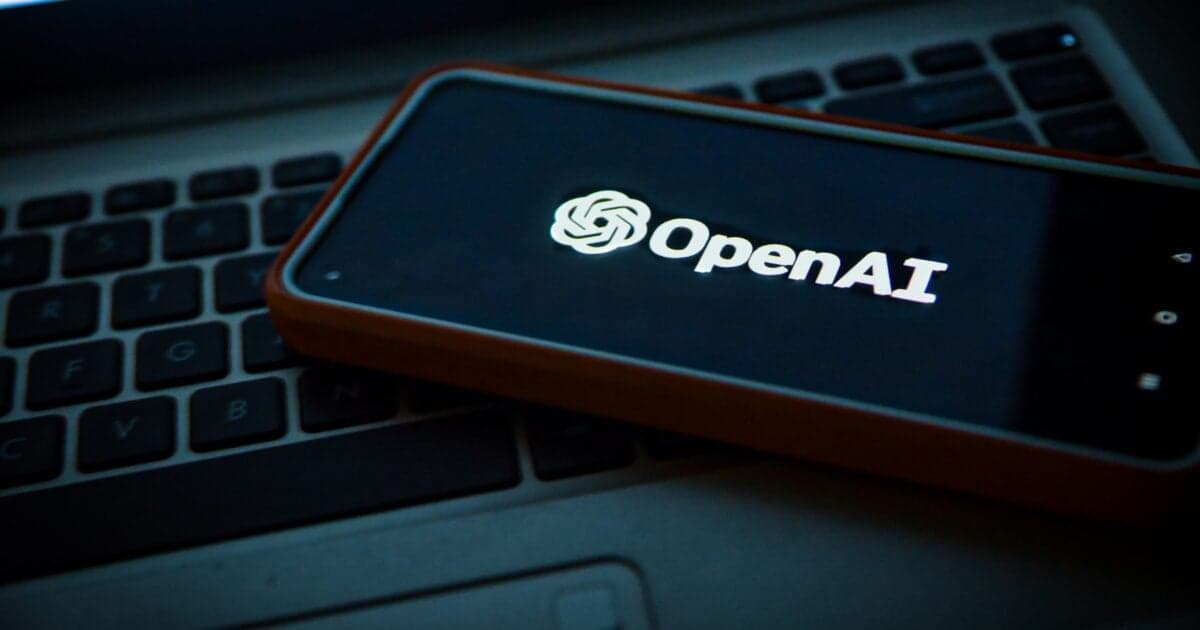OpenAI’s 10% Stake Sends AMD Stock Soaring in the AI Chip Race


The dark horse of AI chips is soaring today...
AMD (AMD) shares are up 25% today, hitting an all-time high, on news that AI firm and ChatGPT creator OpenAI would take a stake in the company up to 10%.
In exchange for the investment, OpenAI has agreed to buy enough of AMD's Instinct AI chips to provide 6 gigawatts ("GW") of power to its AI data centers.
Over the course of the partnership, OpenAI has a warrant for 160 million shares of AMD. OpenAI will receive shares as it deploys each additional GW of AMD chips... with other shares released if AMD hits share-price targets and OpenAI meets operational goals.
For a company as large as AMD, with a $267 billion market cap, a 30% move in a single day is a huge move. But these swings, which can add or subtract tens of billions (and sometimes even hundreds) of dollars in market cap in a day, have become more common in recent months.
And so have OpenAI's chip partnerships. AMD is just the latest.
Today, we'll cover what OpenAI shows us about the state of the AI boom – and how investors can position themselves to profit...
OpenAI's Partnership With Nvidia (NVDA)
Last month, AI chip giant Nvidia announced that it planned to invest as much as $100 billion in OpenAI.
Nvidia will invest cash into OpenAI in exchange for equity. Meanwhile, there's a good chance OpenAI will use that cash to turn right back around and buy chips from Nvidia.
OpenAI already relies on Nvidia's graphic processing units ("GPUs") to train and run its models. So this deal would solidify Nvidia's place as OpenAI's main supplier.
But now, OpenAI is investing in AMD too – proving that it may need more chips than even Nvidia can provide.
To meet its lofty goals for AI, OpenAI also needs cash – badly. OpenAI expects to burn through about $8.5 billion in 2025. The company only has $17.5 billion in cash on its balance sheet.
Put another way, OpenAI only has about two years of cash left, at least if it keeps burning through it at the current rate. But I don't expect it to run out. Private investors can't get enough of OpenAI (and AI in general)...
Just last week, OpenAI reached a $500 billion valuation. That makes it the most valuable private company in the world.
And a recent report from Reuters showed that AI made up about half of all venture-capital funding in the third quarter. (Funding for AI firm Anthropic made up nearly 30% of all venture-capital deals in the quarter.)
With AI being such a hot investing field, private investors are still champing at the bit to invest in OpenAI and other AI projects.
Beware the Circular AI Investment Ecosystem
These deals can send shares soaring in the near term. But they do pose a risk for the AI trend in the long term.
As Stansberry Research Director of Research Matt Weinschenk explained in Friday's issue of This Week on Wall Street, deals like Nvidia/OpenAI and OpenAI/AMD have made the industry complicated and "circular."
From Matt...
AI companies with capital are pouring it right back into other layers of the AI stack.
As noted earlier, Nvidia is investing $100 billion into OpenAI. OpenAI will use that investment to... buy chips from Nvidia.
Nvidia has done the same with other companies. It owns nearly 7% of CoreWeave, which uses Nvidia's chips to build its data centers.
These are roundabout deals in which suppliers invest back into their customers, who use the cash to buy more from the supplier.
That could cause an issue down the line, Matt continues. All it takes is one "break" in the chain to disrupt the entire ecosystem.
But that doesn't mean we're at that moment just yet. In fact, we may be years away.
The AI Boom Still Has Room to Run
While there are similarities between the current AI industry and the dot-com-era bubble – like heavy investment in infrastructure – we're not at the end of the road just yet.
Stansberry Research senior analyst Alan Gula just gave five reasons why he believes "the AI boom isn't in dot-com territory yet." He lists points like investor sentiment, growing earnings from big tech companies, and even valuations as reasons.
From Alan on valuation...
The Nasdaq 100 reached a truly absurd valuation in 2000. Its trailing P/E reached nearly 100.
On the bright side, the largest stocks in the Nasdaq aren't nearly as expensive as they were during the dot-com bubble. The Nasdaq 100's trailing P/E is currently about 34. On the other hand, the index is also well above the 10-year average P/E of about 27.
Valuations aren't anywhere near those past extremes. But while we're not at the bubble peak yet, things are getting crazy.
Chipmaker Wolfspeed (WOLF) is a great example. The company just came out of bankruptcy, and its shares soared more than 1,000% in a day, even though each share is only worth 1% of what it was before the bankruptcy proceedings.
So it's a good time to get a little cautious. As Alan concludes...
By all means, be disciplined and follow your investing strategy. Make sure your portfolio is diversified. Hold some defensive stocks. Sell stocks that have unrealistic expectations built into their valuations. Hold some cash.
But whatever you do, don't claim that this market is crazier than the peak of the dot-com bubble.
Investors can profit from the AI trend without going all in. That means it's time to consider which stocks are worth buying...
Does AMD Stock or Nvidia Stock Look Like a Buy Today?
Let's compare the two chipmakers that OpenAI has partnered with in the past few weeks – AMD and Nvidia.
These are two of the biggest names in the chip industry. And they've both tried to take advantage of the AI trend.
Nvidia has been more successful, holding more than 90% of the AI chip market. And that dominance is also showing up in its stock performance...
Since ChatGPT launched in November 2022 and kickstarted the AI boom, Nvidia's shares have soared more than 1,000%. AMD, on the other hand, has "only" returned about 190% over the same period.
Both of those performances crush the S&P 500's 70% return since November 2022. But Nvidia is the clear winner by gains alone over that period.
What about going forward? First, let's compare these stocks' grades on our proprietary Stansberry Score...
AMD gets a score of 77, an overall grade of B. And it ranks 523 out of the 4,000 stocks we track.
The company earns "A" grades for both its financials and capital efficiency. But it only gets a C for valuation – thanks to its high forward price-to-earnings (P/E) ratio of 28.
As for Nvidia, it also gets a score of 77 and a B grade from our Stansberry Score...
Nvidia is ranked just inside the top 500 stocks in our system. Like AMD, it gets an A for capital efficiency. But it only receives a grade of "B" for its financial performance.
And once again, our system gives Nvidia a C for valuation, with its forward P/E ratio at 30.
These valuation grades might give some folks pause. For comparison, the S&P 500's forward P/E ratio is at 23. But both of these companies receive strong financial and capital-efficiency grades. You could make the argument that both companies deserve to trade at a premium to the broader market.
Both are providing chips to one of the most valuable AI companies around. They have strong financials. And they're well-positioned in the AI race.
The Stansberry Score gives them the exact same grade. Based on our scores, both of these companies look like solid long-term investments.
Good investing,
Nick Koziol
P.S. Can artificial intelligence really help you make money in the stock market?
We set out to find the answer. You see, Stansberry Research just trained our own proprietary AI system...
It took $4 million in total research costs, and input from dozens of technology and finance experts. But it was worth it. In a multiyear back test, we pitted our breakthrough against stocks, bonds, and gold.
It beat them all... and even outperformed legendary investor Warren Buffett.
We think our AI system could change how you look at the stock market forever... Try it out for yourself right here.


